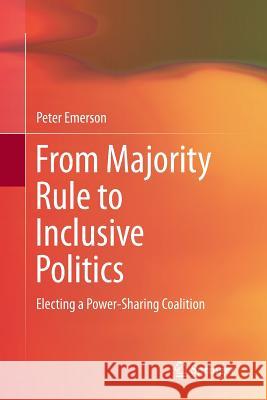From Majority Rule to Inclusive Politics » książka
topmenu
From Majority Rule to Inclusive Politics
ISBN-13: 9783319794938 / Angielski / Miękka / 2018 / 146 str.
Kategorie BISAC:
Wydawca:
Springer
Język:
Angielski
ISBN-13:
9783319794938
Rok wydania:
2018
Wydanie:
Softcover Repri
Ilość stron:
146
Waga:
0.25 kg
Wymiary:
23.39 x 15.6 x 0.97
Oprawa:
Miękka
Wolumenów:
01
Dodatkowe informacje:
Wydanie ilustrowane











